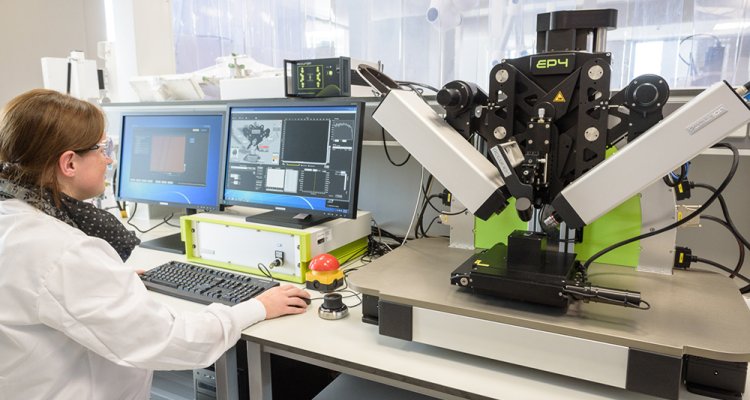
Seminar
Seminar on the possibilities of surface analysis
The surface of an object or living cell can tell a lot about the quality of products and materials or give insight into (biological) systems and processes. A range of techniques and facilities are available for researchers to characterise the surfaces in food products, materials and metallurgy, the environment. Please, join this free seminar if you are interested in surface analysis and how various advanced technologies can be used in your own research.
In the seminar the following techniques and equipment will be discussed. You can read about their highlights below.
The scanning electron microscope (SEM) is best known for its high resolution images of surfaces. What is less known, is that the electron microscope is capable of identifying the elemental composition of a surface by Energy Dispersive Spectroscopy (EDS). SEM-EDS can identify what the particular elements are in the surface, their relative proportions and their spatial distribution. Thin film analysis is also possible. Using a highly focused electron beam EDS analysis can also calculate the composition and thickness of the individual layers beneath the surface. This means the analysis is spatially resolved laterally as well with depth.
Imaging ellipsometry is a non-destructive technique for determining the thickness and optical properties of thin films at solid or liquid interfaces. The system is capable of measuring film thicknesses from less than one to hundreds of nm and generating images and thickness maps with mm lateral resolution. In this presentation, the basics of the technique will be explained and illustrated with some application examples.
The Scanning Auger Microprobe provides surface analysis for determining the chemical composition of the top few monolayers of surfaces with a resolution of 10 nm. The results can be coupled with the outcomes of the X-ray Photoelectron Spectroscopy (XPS). This latter gives information in more detail about the chemical state, with a lower spatial resolution is obtained.
To join this free seminar please register beforehand by filling out the form on this page. Coffee and tea will be served, please bring your own lunch.
Programme
Researchers from Wageningen University & Research and Surfix will tell all about these techniques and their possibilities in surface analysis during this seminar.
| 12:00 hrs | Short introduction on Shared Research Facilities |
| 12:05 hrs | Applications of the Scanning Electron Microscopy for surface analysis |
| 12:30 hrs | An introduction to imaging ellipsometry and its applications |
| 12:55 hrs | Scanning Auger Microprobe for surface research |
| 13:20 hrs | Questions & Discussion |
| 13:30 hrs | Closure |